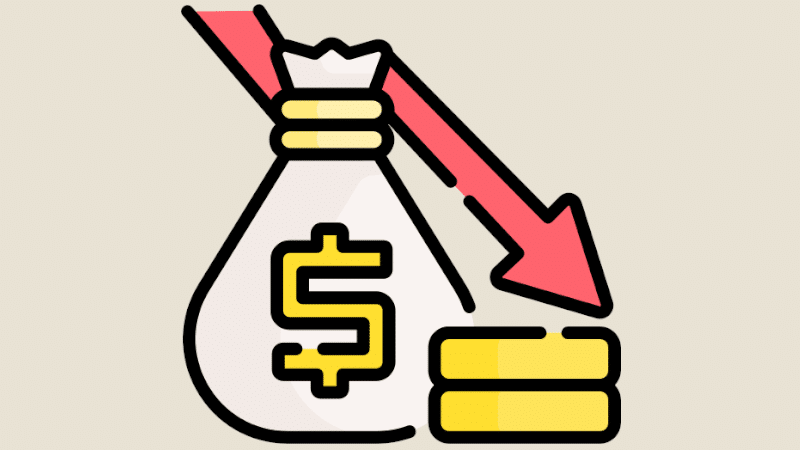Acquiring a new customer costs, on average, 5 to 25 times more than converting an existing one. Building customer loyalty must therefore be a priority for companies in every sector of activity. In other words, existing customers should be kept to a minimum. This is known as customer churn.
What is it? How can it be measured? And above all, how can it be improved? Find the answers here.
Customer churn: Definition
Customer churn is the percentage of customers who stop using a company’s product or service over a given period. This metric is often measured on a monthly basis.
But it is also possible to do so every week, every quarter, every 6 months, etc. The idea is to calculate your attrition rate as regularly as possible in order to limit the impact on your business.
So how do you calculate your customer churn? Here’s the formula:
- Customer churn = Number of customers lost at the end of a period X / Total number of customers at the start of period X
For example:
- You had 500 customers in January 2023
- You have 450 customers in April 2023
For the first quarter of 2023, the churn rate is : 450 / 500 = 0.9, or -10%. The company has lost 10% of its customers.
The objective is to have a customer churn rate close to 0%. A high customer churn rate is a very bad sign for a company. It means that its offering is failing to satisfy its current customers. It is for this very reason that customer churn needs to be analysed regularly.
Good to know: Customer churn is the opposite of customer retention, which consists of keeping customers after an initial purchase.
Why is customer churn so important?
Measuring losses
As customer loyalty is one of the key objectives of all companies, it is essential to measure it. But not just customer satisfaction. Failures also need to be analysed.
A loyal customer continues to buy (more or less regularly) from the same company. In other words, they continue to generate sales. All the more so if the customer lifetime is long.
But when the customer stops buying, the company loses out. Even if it acquires new customers.
And for good reason: the cost of customer acquisition is always higher than the cost of customer retention. Even if the turnover is the same between loyalty and acquisition, the return on investment is quite different. It is therefore important to measure customer churn in order to limit its negative impact on business.

Measuring improvement actions
Over and above the losses caused by churn, it is vital to analyse customer churn in order to answer a number of questions:
- To what extent are customers leaving the company?
- Are there periods when the churn rate is particularly high?
- Is it always the same?
Regular analysis of churn rates enables us to measure the effectiveness of the actions taken. For example, after the launch of a new product, a reorganisation of customer service, etc., analysis of the churn rate will show whether the strategy adopted is the right one.
Predicting churn
Maintaining a churn rate of 0 throughout the year, every year, is almost impossible. Most companies experience the departure of existing customers.
But to ensure that these departures do not have too negative an impact on the business, it is vital to carry out customer acquisition actions at the same time.
By measuring and predicting the churn rate, you can focus your efforts on maintaining an optimum level of overall performance.
How can you reduce customer churn?
While maintaining 100% customer loyalty for all these customers may seem unrealistic, it is possible to reduce the attrition rate. Here are a few tips:
Focusing on the best customers
Most companies have a handful of preferred customers who bring in the majority of sales. This is known as the 80/20 rule. In other words, 20% of customers generate 80% of revenue. This figure can obviously vary from one company to another.
Whatever the proportion, it is essential to focus on the most loyal and profitable customers.
Analyse unsubscribes as they occur
When a company has a high churn rate, it is essential to analyse it. The idea is to understand the reasons for these departures.
This can be done by asking customers directly for feedback. But in the absence of responses, other data can be used to identify the cause of customer churn. For example
- Interactions prior to the customer’s departure: had they shown any dissatisfaction? Did they remain silent? Did they ask questions?
- The period of departure: did the company undergo an organisational change? Launched a new product? Withdrawn an old product? Is there a new competitor on the market? A new product? A new need?
The answers to these questions are essential if we are to understand the reasons for customer churn. But also, and above all, to implement preventive measures.
Personalising the customer relationship and experience
Today’s consumers expect a truly personalised customer experience. And not just during the prospecting phase. So companies need to stay in touch with their existing customers.
In particular, by sending out regular newsletters, promotional offers, communicating on social networks, and so on. It’s all about staying in the customer’s world so that they don’t forget about the company.
To reduce churn and optimise customer satisfaction, companies need to analyse the data available. The presence of a data analyst is therefore essential for all organisations, whatever their sector of activity.

Things to remember
- Customer churn refers to the departure of a customer: they stop buying products or services.
- This indicator needs to be analysed regularly to measure losses and take appropriate action.
- The key to reducing churn is to improve customer satisfaction. But to do this, companies need to know their existing customers well.










